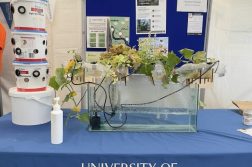Engineers at the University of Sydney have successfully used electricity to help purify contaminated industrial wastewater.
Researchers from the School of Chemical and Biomolecular Engineering have created a process whereby electricity is used to cause an oxidation reaction, converting the harmful organic compounds (containing carbon, nitrogen and phosphorous) into safe ions, minerals and gases.
“We have employed an incredibly powerful process that eliminates even the most persistent non-biodegradable pollutants, such as pharmaceuticals and pesticides, as well as various classes of organic compounds that can be found in many industrial effluents,” said Julia Ciarlini Jungers Soares, a member of the research team.
Large quantities of nitrogen and phosphorus in water promote algae growth and accelerate the process of eutrophication (reducing the amount of oxygen in the water), which harms the local wildlife living in and drinking from the contaminated water bodies.
One of the most popular current processes to purify water involves using chemicals, known as chemical coagulation. However, it requires close monitoring and adjustment to the dosage of chemicals applied to the water; moreover, the toxic sludge produced by the treatment must be removed and responsibly disposed of. The new method using electricity doesn’t need any chemicals and the product doesn’t need to be removed as it is harmless.
If the researchers generate the electricity using a green, eco-friendly method, then the positive impact to the environment could be twofold. Popular renewable sources used to generate electricity currently include solar, wind and hydropower; the energy can then be stored and used on-demand.
The scientists are due to research the process on specific contaminants and are confident that they will be able to apply the technique to large-scale industries around the world, such as pharmaceutical companies.



